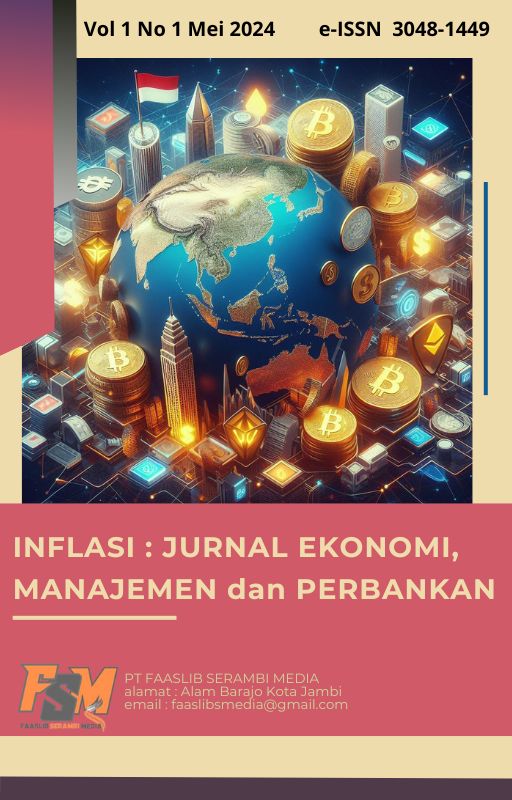Word Of Mouth Marketing Communication Strategy Japan Tourism Dira Park Balung Jember
Keywords:
Communication Strategy, Word Of Mouth Marketing, TravelAbstract
This study aims to describe the word-of-mouth marketing communication strategy of the Japanese tourism company Dira Park Balung Jember Regency. This research is a type of qualitative descriptive research. The methods used are interviews, observation, and documentation. The results showed that the word-of-mouth marketing communication strategy implemented by Japanese tourism Dira Park Balung Jember Regency includes five indicators: talkers, topics, tools, taking parts, and tracking. Speakers (talkers) in marketing communications on this tour are divided into two, namely talkers or intermediaries of predetermined speakers (employees and tour managers) and voluntary speaker intermediaries (visitors, journalists, bloggers, and TV stations). The use of media (tools) includes online media consisting of Facebook, Instagram, WhatsApp, web, YouTube, TV stations, and offline media used through Word of mouth and banner installation. Participation/service (taking Part) carried out by the tour manager is by responding to questions or feedback politely & politely. Second, provide the best service. Third, internal efforts should be made by fostering cohesiveness and brotherhood between employees and maintaining visitors' trust. Fourth, make external efforts by promoting through various aspects. Supervision/control (tracking) is carried out through direct supervision and online supervision by providing criticism and suggestions through the WhatsApp number provided by the tourist.
References
Ayuningtias, N., Widodo, J., Zulianto, M., & Wahyuni, S. (2020). Product innovation and diversification strategies of Banyuwangi local food souvenirs at UD. Sri Rejeki Genteng, Banyuwangi. IOP Conference Series: Earth and Environmental Science, 485(1). https://doi.org/10.1088/1755-1315/485/1/012124
Barbosa, B. (2024). Marketing innovation strategies and consumer behavior. In Marketing Innovation Strategies and Consumer Behavior. https://doi.org/10.4018/979-8-3693-4195-7
Bonifield, C., & Cole, C. A. (2008). Better him than me: Social comparison theory and service recovery. Journal of the Academy of Marketing Science, 36(4), 565–577. https://doi.org/10.1007/s11747-008-0109-x
del Río-Lanza, A. B., Vázquez-Casielles, R., & Díaz-Martín, A. M. (2009). Satisfaction with service recovery: Perceived justice and emotional responses. Journal of Business Research, 62(8), 775–781. https://doi.org/10.1016/j.jbusres.2008.09.015
Du, J., Chen, M. Y., & Wu, Y. F. (2020). The Effects of Social Media on Sporting Event Satisfaction and Word of Mouth Communication: An Empirical Study of a Mega Sports Event. Information 2020, Vol. 11, Page 482, 11(10), 482. https://doi.org/10.3390/INFO11100482
Garg, M., & Bakshi, A. (2024). Exploring the effects of audience and strategies used by beauty vloggers on behavioural intention towards endorsed brands. Humanities and Social Sciences Communications, 11(1). https://doi.org/10.1057/s41599-024-03133-y
Hamdan, A. (2024). Technological Innovations for Business, Education and Sustainability. In Technological Innovations for Business, Education and Sustainability. https://doi.org/10.1108/978-1-83753-106-620241
Haryati, N., Qotrunnada, N.-, Putri, R. W., Syah, Y. A., Ramadhani, M., & Nugroho, B. C. (2022). WOM as The Mediator of Marketing Mix to Customer Satisfaction in Covid-19 Pandemic. INTERNATIONAL RESEARCH JOURNAL OF BUSINESS STUDIES, 14(2), 147–157. https://doi.org/10.21632/IRJBS.14.2.147-157
Iqbal, M., Seadawy, A. R., Lu, D., & Zhang, Z. (2024). Physical structure and multiple solitary wave solutions for the nonlinear Jaulent-Miodek hierarchy equation. Modern Physics Letters B, 38(16). https://doi.org/10.1142/S0217984923410166
Jalil, M. I. A., Lada, S., Bakri, M. A., & Hassan, Z. (2021). HALAL COSMETICS REPURCHASE INTENTION: THE ROLE OF MARKETING IN SOCIAL MEDIA. Journal of Islamic Monetary Economics and Finance, 7(4), 629–650. https://doi.org/10.21098/JIMF.V7I4.1379
Lee, S. E., & Lee, K.-H. (2024). Environmentally sustainable fashion and conspicuous behavior. Humanities and Social Sciences Communications, 11(1). https://doi.org/10.1057/s41599-024-02955-0
Lee, Y.-F., Chen, C.-Y., Chou, Y.-L., & Lin, Y.-H. (2024). Green Consumer Behavior of Sports Enthusiasts on TikTok—An Analysis of the Moderating Effect of Green Concern. Behavioral Sciences, 14(4). https://doi.org/10.3390/bs14040285
Liu, W., Li, T., Liu, X., & Xu, H. (2018). Spreading dynamics of a word-of-mouth model on scale-free networks. IEEE Access, 6, 65563–65572. https://doi.org/10.1109/ACCESS.2018.2878522
Mandal, P. C. (2019). Public policy issues in direct and digital marketing - Concerns and initiatives: Public policy in direct and digital marketing. International Journal of Public Administration in the Digital Age, 6(4), 54–71. https://doi.org/10.4018/IJPADA.2019100105
Masengu, R., Chiwaridzo, O. T., Dube, M., & Ruzive, B. (2024). AI-driven marketing research and data analytics. In AI-Driven Marketing Research and Data Analytics. https://doi.org/10.4018/979-8-3693-2165-2
Rahma, A. (2018). Event Sebagai Salah Satu Bentuk Strategi Komunikasi Pemasaran Produk Fashion Nasional (Event Tahunan Jakcloth). Nyimak: Journal of Communication, 1(2), 149–169. https://doi.org/10.31000/NYIMAK.V1I2.480
Ririh, K. R., & Pratiwi, F. M. (2018). Pengembangan Model Kualitas Pelayanan Jasa Pendidikan Sekolah Karakter di Jakarta. Jurnal Optimasi Sistem Industri, 17(2), 188–197. https://doi.org/10.25077/JOSI.V17.N2.P188-197.2018
ShiYong, Z., JiaYing, L., Wei, W., HaiJian, W., Akram, U., Lei, W., & BiQing, L. (2022). Effect of Seeding Strategy on the Efficiency of Brand Spreading in Complex Social Networks. Frontiers in Psychology, 13, 879274. https://doi.org/10.3389/FPSYG.2022.879274/BIBTEX
Utama, I. G. B. R. (2017). Tourism Destination Image of Bali According to European Tourist. Advances in Social Science, Education and Humanities Research, 27–31. https://doi.org/10.2991/icirad-17.2017.6
Wirtz, J., & Mattila, A. S. (2004). Consumer responses to compensation, speed of recovery and apology after a service failure. International Journal of Service Industry Management, 15(2), 150–166. https://doi.org/10.1108/09564230410532484
Downloads
Published
Issue
Section
License
Copyright (c) 2024 Yusnia Nur Zannah Habibi, Mukhamad Zulianto (Author)

This work is licensed under a Creative Commons Attribution-ShareAlike 4.0 International License.













